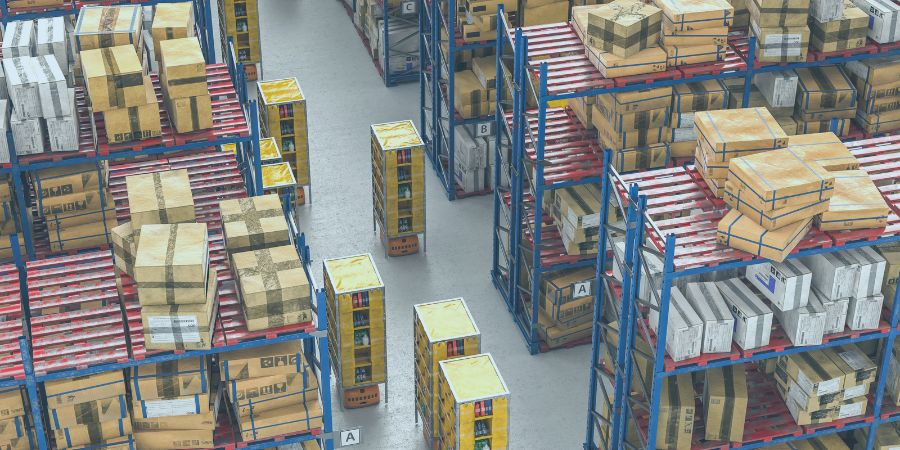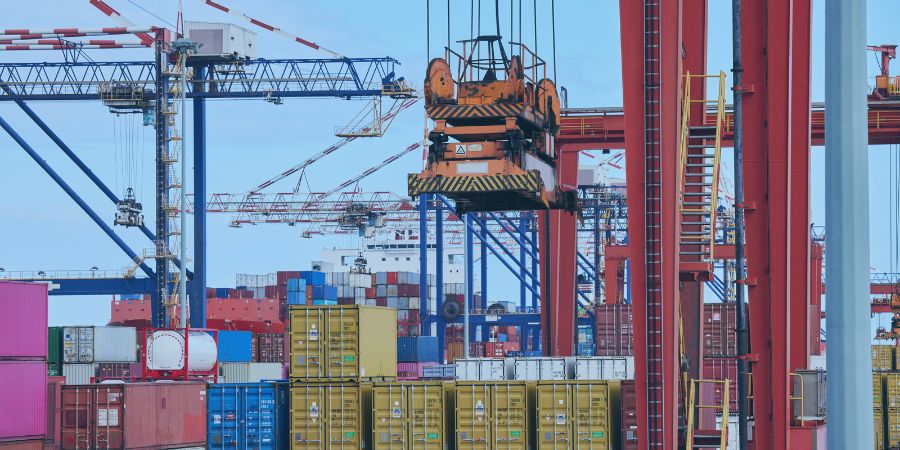Supply Chain Transparency: The Role in Business Continuity Planning
Published on May 05, 2023
Last updated on July 30, 2024
Jump to a section
Challenges and Opportunities in Supply Chain Management
From global strains on the supply chains to using artificial intelligence (AI), supply chain management remains one of the areas of any business that continues to evolve. There are obvious challenges and opportunities, and it's essential to address them since it is one of the critical areas for any organisation.
But one of the more pressing issues that organisations must learn to address would be the need for supply chain transparency. A transparent supply chain is more relevant in some industries, particularly in the food industry, such as restaurants, meat and food processing, and fashion.
The growing ethically-conscious consumer approach has contributed to the need to keep your supply chain transparent. It's neither a fad nor a phenomenon but a norm. Consumers expect manufacturers and companies to be open about their supply chain data to gain the trust of discerning consumers.

Defining Supply Chain Transparency
But first, what is supply chain transparency?
In a nutshell, supply chain transparency refers to the extent to which an organisation shares supply chain information. The relevant information includes but is not limited to sourcing raw materials, labour practices, and suppliers. It encompasses all aspects of the value chain from the materials to processes and potential social and environmental impact. Improving transparency showcases to your consumers the concerted action you're taking toward boosting confidence in doing business with you.
On the other hand, lack of information and supplier-related issues can raise concerns about human rights abuses, child labour, environmental protection, and potential animal welfare risks.
Regardless of the industry you're operating in, all companies should prioritise complete transparency. Let's dive into the benefits of maintaining a transparent supply chain and how it impacts your business continuity planning measures.
Importance of Supply Chain Transparency
What are the benefits of transparent supply chains? Let's examine them closely.
Foster Brand Loyalty Among Customers
Customer concerns about transparency are the primary driver for keeping your supply chains transparent. For example, they now prefer supporting companies with sustainable supply chains. Therefore, you must openly share detailed information about your supply chain process to win over more consumers and foster brand loyalty.
On the other hand, customers don't like to support brands with unethical sourcing practices, use child labour, or violate human rights. You can win customers with a sustainable approach to supply chain visibility and ethical practices.
Strong Relationships with Suppliers
Supply chain transparency also enables your company to maintain solid relationships with suppliers. Being open about your business needs and requirements turn your suppliers into collaborators, so you're working together as a team instead of as separate entities.

Regulatory Compliance
Different countries have varying regulatory requirements in place for companies. It's part of the government's commitment to maintain ethical sourcing practices and prevent illegal sourcing of raw products and goods.
Keeping your supply chains transparent can overcome regulatory issues and legal risks for your organisation.
Customer Reassurance
In the wake of various scandals involving human rights abuses, child labour, conflict minerals, and sourcing products from war-torn regions, supply chain transparency reassures your customers that you're not one of the companies that support these unethical practices. Many customers like to support companies aligned with their values. Your continuous improvement in building transparency will give you a competitive advantage.
Attract Top Talents and Investors
An ethical company can win over top talents and investors. You should invest in supply chain transparency incentives if this is your goal. It demonstrates your commitment to addressing social responsibility. You could attract like-minded individuals and organisations by staying true to your company values.
Supply Chain and Business Continuity
Supply chain transparency is a vital aspect of business continuity planning. In today's globalised landscape, disruptions to the entire supply chain could happen anytime. If the recent pandemic taught us anything, it can be that any disruptions can have far-reaching consequences that could jeopardise the whole operation. When there are disruptions to your supply chain operations, it could impact your business financially and also lower customer satisfaction levels.
Therefore, companies must ensure that their supply chain is resilient, adaptive, and can overcome disruptions.
Increased transparency in the supply chain is crucial in improving business continuity. As an organisation, you achieve visibility and control over the supply chain. You can anticipate and mitigate disruptions and potential risks when you are open about your suppliers, materials, and processes. When you anticipate those disruptions to your supply chain, you can respond quickly because you have an alternate plan to help maintain operations during a disruption.
Supply chain transparency can also foster supplier trust and build a solid partnership. Thus, you can collaborate as you make an effective risk management plan that could help you move past disruptions.
For example, many large businesses survived the recent pandemic by improving transparency with their suppliers about safety protocols, business continuity plans, and inventory levels. As a result, these companies could meet customer demands and stay afloat despite the threat of supply chain disruption.

What is Supply Chain Continuity?
Supply chain continuity should be a part of your overall continuity strategy. It's a crucial aspect of transparent supply chains as it enables companies to maintain an adequate supply of goods and services despite any disruption. Continuity planning involves an uninterrupted flow of materials from production to delivery of products or services to consumers. Every point in the transparent supply chain must be accounted for in continuity planning from sourcing raw materials to processing and maintaining supplier relationships.
Companies should have a deeper understanding of their supply chain management's vulnerabilities, risks, and dependencies. It helps to ensure the continuity of your supply chain operations to a certain extent. Improving supply chain transparency and continuity safeguards the organisation's and its stakeholders' interests.
How Can a Business Keep Their Supply Chain Moving?
Companies must employ a proactive and strategic approach. First, you must develop a comprehensive plan that outlines potential risks and vulnerabilities. Then, you must develop contingency plans for each identified risk and your response strategies. Finally, regularly review and update those plans to stay relevant and practical.
Companies can also leverage data analytics and technology to make informed decisions regarding disruptions. For example, you can use data analytics and supply chain mapping to predict weather patterns, labour shortages, and transportation issues. You can also use technology to identify critical suppliers and regularly communicate your needs with those suppliers. Openly sharing supply chain data with suppliers can fortify your relationship, ensure you are on the same page, minimise disruptions, or reduce its possible impact.
Challenges in Supply Chain Transparency
While there are manifold benefits to maintaining supply chain transparency, there are several challenges, too. An organisation must recognise these challenges when implementing its initiatives toward keeping its supply chains transparent.
Complexity of Global Supply Chains
The complexity of global supply chains is part of the hurdles companies will face in their concerted effort toward increased transparency. Information gaps could occur when dealing with multiple suppliers and contract manufacturers, which is typical for many large businesses. It would be difficult for companies to maintain complete transparency when they lack the detail required for each supplier or source of goods and raw materials. When dealing with unclear sources, you must dig deep to track and verify the origin of goods.
Another factor that can complicate supply chain management is each country's varying laws and regulations. Depending on where your suppliers are from, they might have varying regulatory requirements that make it challenging to collect information and maintain true transparency.

Transparency vs Confidentiality
A lack of standardised reporting on supply chain transparency can make it challenging to balance how you meet consumer concerns and how much detail you can share with the public. Every organisation knows that supply chain management is part of the essential data you want to protect from the public to preserve your interests and stakeholder demands. However, it's confidential information, especially if it gives you a competitive advantage in the industry.
Balancing your desire to maintain transparency in your supply chain shouldn't come at the cost of your organisational assets. Otherwise, you lose the benefits of supply chain transparency.
Cost of Implementing Supply Chain Transparency Measures
The cost will be another critical hurdle in achieving supply chain transparency. To build supply chain transparency, you must invest in technology, data analytics tool, and compliance management systems. These tools are essential for data collection and analysis, so you can predict patterns and anticipate.
You will also require additional staff to manage and collect information about your suppliers. The team are also responsible for communicating with stakeholders about supply chain transparency.
Potential Risk of Not Planning for Supply Chain Continuity
Failing to plan for supply chain continuity as part of your crisis recovery strategies could have severe consequences for an organisation. Here are some of the potential drawbacks to consider:
- Supply Chain Disruption: Failing to plan for disruptions in the supply chain could result in delays, material shortages, and decreased customer satisfaction.
- Reputational Damage: When disruptions happen, and you can't keep your operations and supply chains moving, it could leave a sour taste in your investors' and customers' mouths. They could question your ability to manage and prepare for risks.
- Increased Cost: You'll be forced to look for other potential suppliers or hire a logistics partner at a premium to cope with customer and stakeholder demands.
- Financial Loss: You could lose money due to lost sales, production downtimes, and reduced profit.
- Failure to Meet Contractual Obligations: You could face more serious consequences, such as legal disputes, and even ruin your supplier relationships.
- Loss of Market Share: You will be outperformed by other companies that are prepared for disruption or have better continuity plans.
- High Employee Turnover: Employees lose their morale if you cannot keep your business open, causing them to look for other, more stable employment opportunities.
- Difficulty Finding New Customers and Investors: The reputational damage will make overcoming the initial lack of supply chain transparency and continuity planning difficult.

Examples of Brands with Supply Chain Transparency
Several companies and brands demonstrate transparency in their supply chain operations.
Patagonia's Sustainable Supply Chains
One example is Patagonia, which is an outdoor clothing company. They deliver transparency and ethical commitment in their supply chain process. For example, you can find detailed information about their suppliers, materials, and production processes on their website.
Not only that, but they also work with potential suppliers that ensure fair labour practices and those who care about their environmental impacts. They continue to lead other brands in using sustainable practices and reducing their carbon footprint.
Nestle's Responsible Value Chains
Another brand that has committed to making its supply chain information transparent is Nestle, and they're pretty vocal about it too. The company implements a responsible sourcing program. They even publish a list of their suppliers on their website to guarantee their customers they are sustainably sourced materials.
For their efforts at maintaining sustainability and supply chain transparency, Nestle has received the Dow Jones Sustainability Index for several years.
Everlane's Radical Supply Chain Transparency
Everlane is a fashion brand that has paved the way in transparent supply chains. The brand is open about its suppliers and production process. They even have a radical transparency initiative, wherein they break down the cost of each product. In addition, they have committed to partnering only with suppliers and other companies who share their values.

Conclusion
This supply chain transparency article serves as a reminder that your supply chain and business continuity plans are not exclusive. They are interdependent and should always go hand in hand.
The relationship between supply chain transparency and business continuity requires you to proactively assess and reduce the risk for every supply chain point. If not, your entire organisation could be at risk, not just the supply chain. To serve your organisation's interest and its internal and external stakeholders, you must implement key strategies to keep the supply chain moving. It includes a comprehensive continuity plan outlining how to minimise supply chain disruptions and use technology and data analytics.
Lastly, maintaining excellent partnership and collaboration with suppliers help overcome information gaps. You need this to guarantee supply chain visibility and reliability, consequently protecting brand reputation.
Accessing business continuity planning tools and software is vital to simplify the process. Business continuity solutions are an invaluable tool during times of disruptions. It provides a framework for assessing risks and developing response strategies. With this tool, you are better prepared for disruptions, especially when cyberattacks, pandemics, and natural disasters are common threats.
With these, you can guarantee your organisation is well-positioned to tackle any disruption. Continuity2 is a comprehensive business continuity solution that enables you to identify potential risks and build a customised plan to mitigate them. Leveraging the cutting-edge technology and tools from Continuity2 boosts your ability to stay operational and recover fully from any incident. Learn how we can help you protect your organisation and ensure uninterrupted operation. Book a demo and see what difference it can make!
Written by Grace Lowe
Operations Manager at Continuity2
With a solid background in sales and support, Grace manages day-to-day activities so that business processes run smoothly, efficiently, and effectively. For the past 3 years, Grace has built and maintained strong relationships with clients, maximising their Business Continuity and Resilience efforts to the fullest.


Written by Grace Lowe
Operations Manager at Continuity2
With a solid background in sales and support, Grace manages day-to-day activities so that business processes run smoothly, efficiently, and effectively. For the past 3 years, Grace has built and maintained strong relationships with clients, maximising their Business Continuity and Resilience efforts to the fullest.